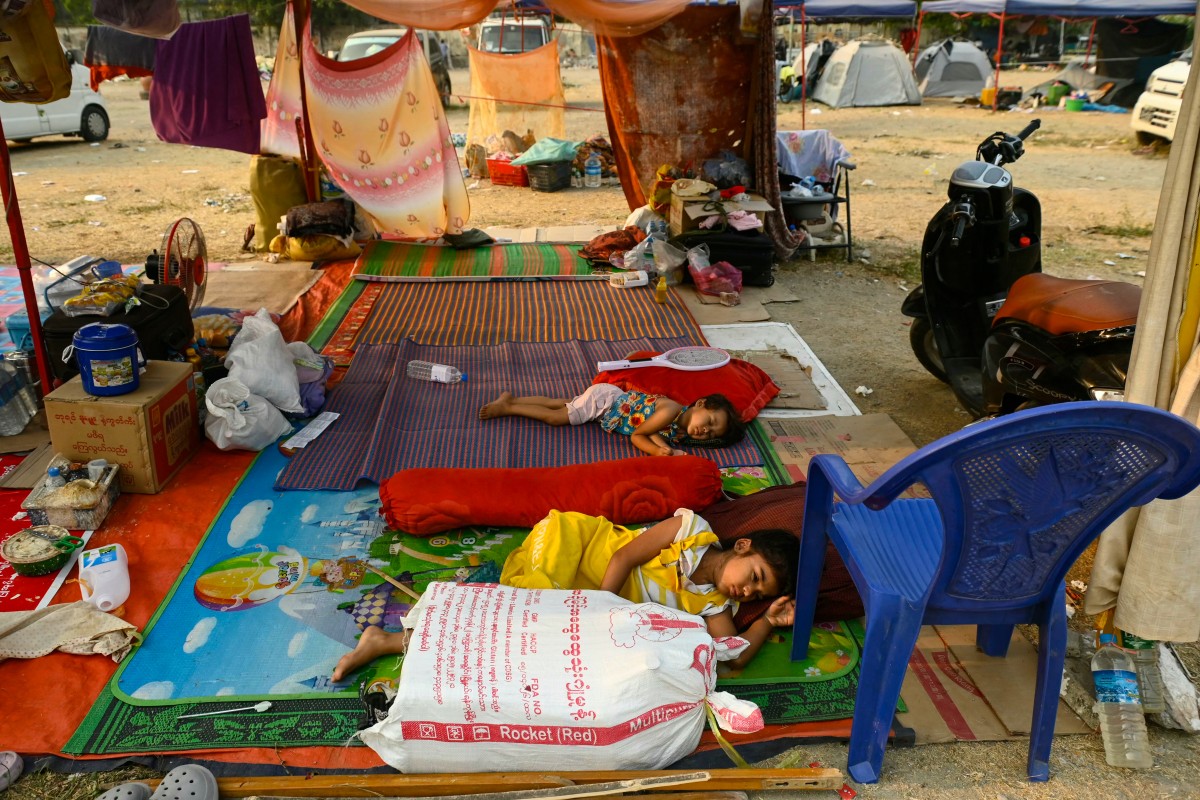The Catholic Church in Myanmar is at the forefront of emergency relief efforts as torrential rains and strong winds continue to batter the regions of Mandalay and Sagaing, compounding the suffering of thousands displaced by conflict and a recent earthquake.
Heavy downpours have left many homeless people—already living in makeshift tents on the streets—exposed to the elements.
“The rain and wind are putting additional strain on those living in makeshift tents on the streets,” said the Catholic Emergency Rescue Team of the Archdiocese of Mandalay in a report by Vatican’s Fides News Agency.
The severe weather has also disrupted the national power grid, causing widespread blackouts across affected communities.
Archbishop Marco Tin Win, along with priests and religious members of the Archdiocese of Mandalay, has joined the displaced in sleeping outdoors to show solidarity with those most affected by the crisis.
Catholic layperson Joseph Kung described the urgency of the situation, saying that the “urgent work now is to care for and assist those who have found themselves on the streets.”
“The death toll seems to be almost complete. Among the homeless, who need drinking water and food, there is now a risk of diarrhea, respiratory, and skin diseases due to poor hygienic conditions,” he added.
Catholic volunteers across Mandalay are mobilizing to provide critical aid. Relief distributions include food, drinking water, medicine, emergency shelter, and hygiene items.
The Sacred Heart Cathedral in Mandalay, itself damaged by the earthquake, has become a sanctuary for displaced people of various faiths.
“The grounds of the Sacred Heart Cathedral in Mandalay, which was damaged by the earthquake, have become a refuge for the earthquake victims, regardless of ethnicity or religion: they are Christians, Buddhists, Muslims, and Hindus, and the parishioners have worked hard to alleviate the suffering of the victims,” said Father Peter Kyi Maung, Vicar General of the Archdiocese.
Archbishop Tin Win has also been visiting communities in Sagaing, offering spiritual support and delivering humanitarian aid. “This suffering has also become an opportunity for profound interreligious dialogue, as the majority of the affected population is Buddhist,” added Father Maung.
The Archdiocese of Mandalay is still assessing the full extent of the damage to its infrastructure. Preliminary reports cite damage to the archbishop’s residence, the Sacred Heart Cathedral (including its severely damaged bell tower), the rectory, and several churches, including St. Francis Xavier, St. John, and St. Michael in Mandalay; as well as churches in Thanwin Township, Lafon, Yamethin, and Zawgyi.
Other affected facilities include the St. John Paul Educational Institute, the Mother Teresa Home for the Sick, and both the intermediate and minor seminaries.
Due to the current conditions, the episcopal ordination of Bishop Augustine Thang Zawm Hung—originally scheduled to take place in Mandalay—has been moved to St. Mary’s Cathedral in Yangon and will be held on April 27.
In the wake of the natural disaster, Church leaders are renewing calls for a nationwide ceasefire. “A ceasefire is all the more necessary,” said Father John Aung Htoi.
The priest acknowledged the sacrifices made by the younger generation in their resistance against the military junta over the past four years and recognized their hesitation toward a ceasefire. However, he emphasized that, given the current humanitarian crisis, a comprehensive cessation of hostilities is crucial for the country’s well-being.
“As a Catholic community in Myanmar,” he added, “we urgently call for a ceasefire after such a natural disaster. I believe that the dignity of any organization will not be damaged by efforts to stop the war and care for so many people in need.”
The priest stressed the need to initiate a ceasefire as a first step toward peace, emphasizing that it would create the conditions necessary for all sectors of society to take part in rebuilding the country.







